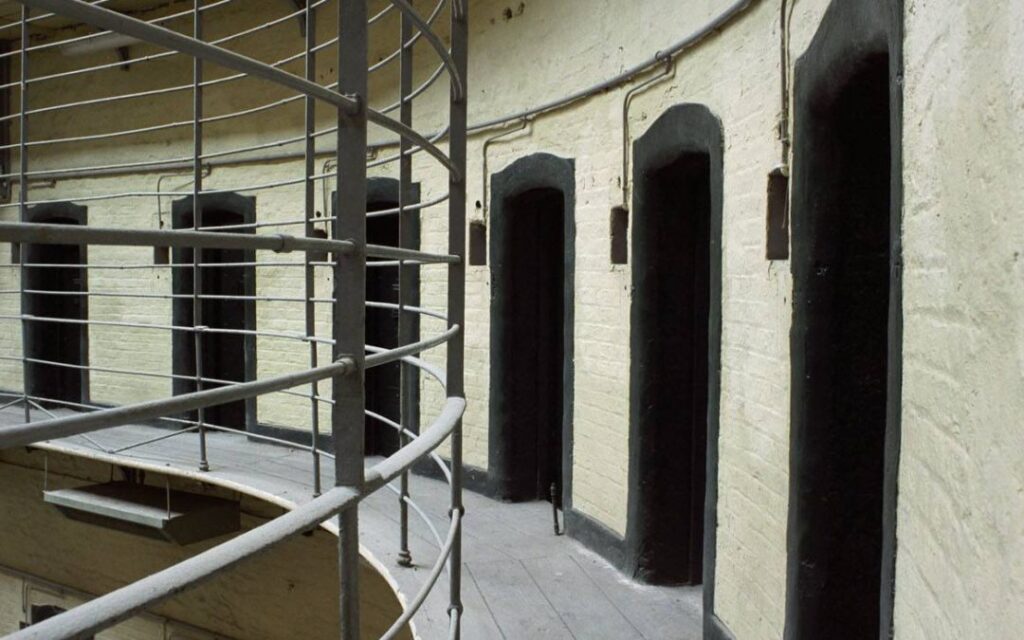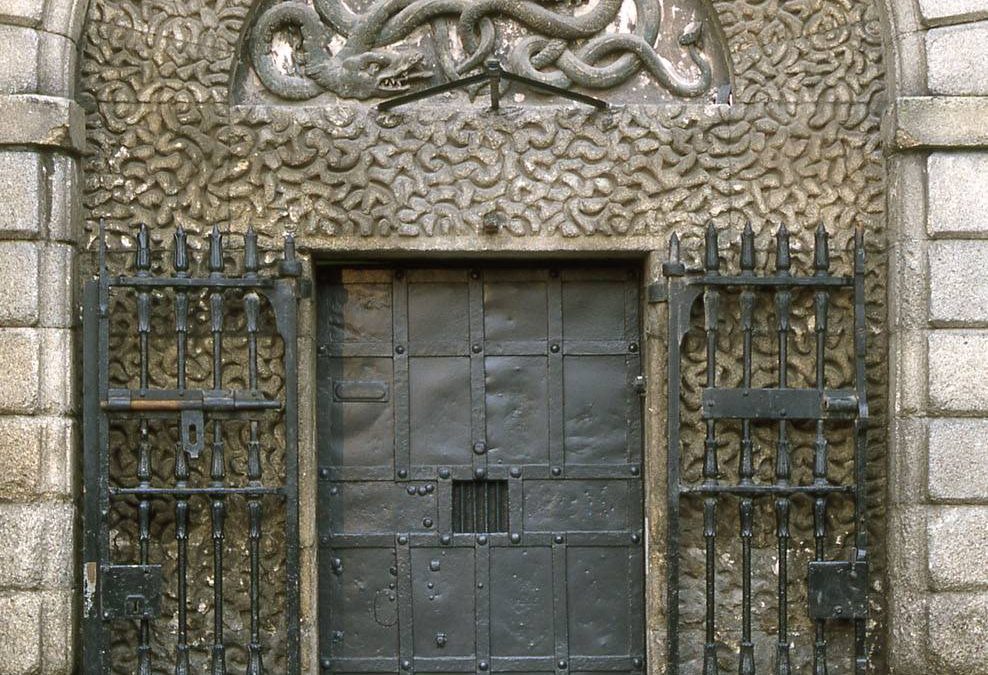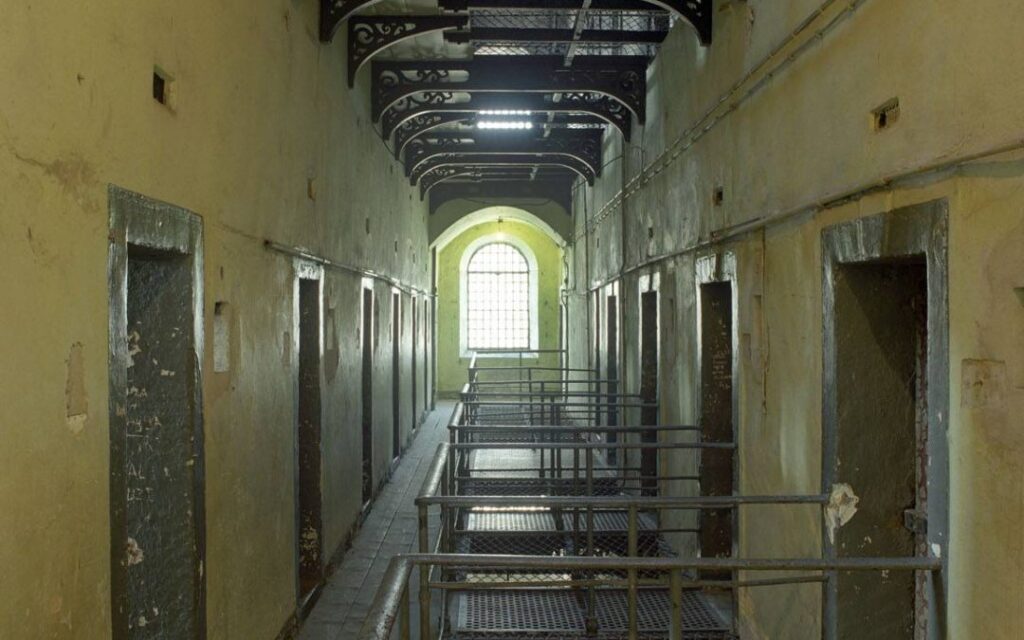On the evening of 14 February 1921, at the height of the Irish War of Independence, three men – Ernie O’Malley, Simon Donnelly and Frank Teeling – escaped from British custody in Kilmainham Gaol.
With the help of a number of British soldiers who were guarding them, a bolt-cutters had been smuggled into the Gaol which allowed the men to break the padlock on the gates to the western entrance to the building. Once outside, they found their way onto a tram and escaped to freedom.
A fourth prisoner, Patrick Moran, who had played a key part in planning the escape, decided at the last moment to stay behind. He felt that if he escaped he would be letting down the witnesses who had agreed to give the evidence he felt would prove his innocence of the charges made against him.
It was to prove a fatal decision however, as he was later found guilty and hanged in Mountjoy Prison on 14 March 1921.
The gates continued to hang at the western entrance of Kilmainham Gaol until the 1990s.
At that time it was decided that they were no longer fit for purpose and they were removed and placed into storage.
They remained in the stores until 2019 when the Office of Public Works embarked upon a project to restore the gates with a view to putting them on display in Kilmainham Gaol Museum for the centenary of the escape in 2021.

Sven Haberman of Conservation Letterfrack took on the enormous task of both conserving the gates and mounting them for exhibition.
The process of preserving them is among the most complex conservation projects ever undertaken by the Museum.
The gates, which date from the mid-19th century, measure 2.64 metres wide by 2.85 metres high and have a combined weight of approximately 800 kilograms. It took almost a year and a half to dry the gates out alone, and only then could the painstaking process of consolidating the wood and treating the rusted metal begin.
Unfortunately, due to the Covid-19 lockdown it was not possible to have the gates on display for the centenary of the escape in 2021, but Kilmainham Gaol Museum and the Office of Public Works are delighted that they will be going on display this Tuesday, 14 February for the 102ndanniversary.
The Escape Gates will be accompanied by a special display, which includes the padlock that the escaping prisoners cut open using the smuggled bolt-cutters.

After the escape, the padlock was found discarded in the nearby undergrowth. It eventually made its way into the collection of the National Museum of Ireland who are now lending it to Kilmainham Gaol for this exhibition. This will be the first time that the gates and the lock have ever been displayed together.
Other exhibits include a shirt collar which Patrick Moran used to smuggle out a message from the Gaol to his family in November 1920, and a first edition of Ernie O’Malley’s 1936 memoir On Another Man’s Wound in which he described the escape in vivid detail.
In addition to unveiling the Escape Gates, Minister O’Donovan will formally accept a new portrait of Ernie O’Malley by Mick O’Dea PPRHA, which has been specially commissioned for Kilmainham Gaol by Ernie O’Malley’s son, Cormac. In addition to the time he spent in the Gaol prior to his escape during the War of Independence, Ernie O’Malley also spent last months of 1923 in Kilmainham, having taken the anti-treaty side in the Civil War.
For part of that time he was on a 41-day hunger strike, which he describes in visceral detail in his Civil War memoir, The Singing Flame. He also gives an account of the surprisingly festive Christmas he and his fellow prisoners spent in Kilmainham after the hunger strike had ended.

Mick O’Dea’s full-length portrait depicts Ernie O’Malley as an active field–commander set against the background of an unidentified Irish winter landscape.
A past president of the Royal Hibernian Academy, Mick O’Dea is also a member of Aosdána. Examples of his work can be found in the National Gallery of Ireland, the Crawford Gallery in Cork and the OPW State Art Collection.
Among his commissioned work is the official portrait of President Michael D. Higgins which hangs in Leinster House. The exhibition will run until March 31st.

